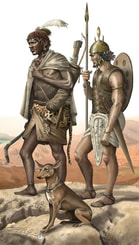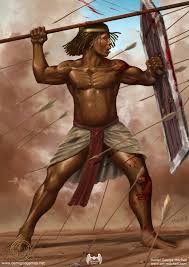Describe two groups of the Kenyan Cushites THE PEOPLES OF KENYA UPTO THE 19TH CENTURY [CUSHITES] THE PEOPLES OF KENYA UPTO THE 19TH CENTURY [CUSHITES]
Identify Kenyan communities that make up the Eastern Cushites
Explain/trace the migration and settlement of the Oromo and Borana into KenyaTHE OROMO
About 1000AD, more Borana groups migrated into present-day Kenya from Somalia due to war between Somali nationalists and British colonialists
Explain the economic activities of the Borana during the pre -colonial period
Discuss the socio-Political organization of the Borana in the pre -colonial period
SOCIAL ORGANIZATION
Between the twelfth and the fourteenth centuries AD, many of the Somali converted to Islam and established the Ajuran state near Mogadishu. Trace/discuss the migration and settlement of the Somali into Kenya.
Identify/explain the economic activities of the Somali in the pre -colonial period
Today, the Somali constitute the largest single group of Cushites in Kenya. Discuss the socio-political organization of the Somali in the pre -colonial period
SOCIAL ORGANIZATION
State the reasons for migration and settlement of the Cushites into Kenya in the pre - colonial period
The Borana were patrilinial. The first male born would inherit all the property of the father. Today, Borana territory extends up to the area north of the river Tana Explain the economic activities of the Cushites in the pre -colonial period
Discuss the social organization of the Cushites in the pre -colonial period
Explain the principles under which the Age -Set system operated among the Cushites in the pre-colonial period (Explain how the Age Set system functioned among the Cushites in the pre-colonial period)
Identify religious aspects/practices among the Cushites during the pre-colonial period (Explain the influence of religion among the Cushites in the pre-colonial period)
Discuss the political organization of the Cushites in the pre -colonial period
Even before their arrival in Kenya, the Oromo had conflicts with the Somali, which continued up to early 20th century when both signed an agreement by which they settled in their present homeland. Today, the Oromo are found on the southern part of the river Tana and are neighbours to the Pokomo. Explain the role/duties of the council of elders among the Cushites in the pre -colonial period. (Explain the functions of the council of elders among the Cushites in the pre-colonial period)
What were the effects/results of migration and settlement of the Cushites into Kenya? (Explain the consequences of the migration and settlement of the Cushites into Kenya)
Related Topics
0 Comments
Leave a Reply. |
Archives
April 2024
Categories
All
|
Can't find what you are looking for? Don't worry, Use the Search Box Below.
|
Primary Resources
College Resources
|
Secondary Resources
|
Contact Us
Manyam Franchise
P.O Box 1189 - 40200 Kisii Tel: 0728 450 424 Tel: 0738 619 279 E-mail - sales@manyamfranchise.com |

 RSS Feed
RSS Feed

